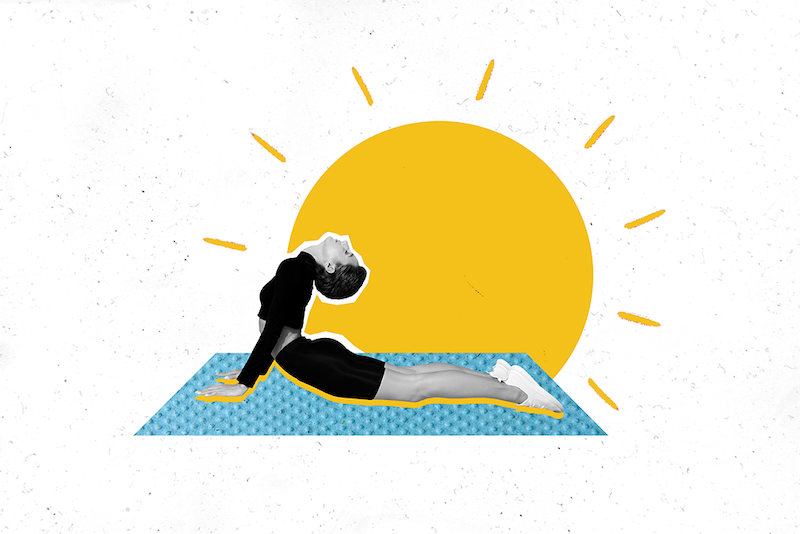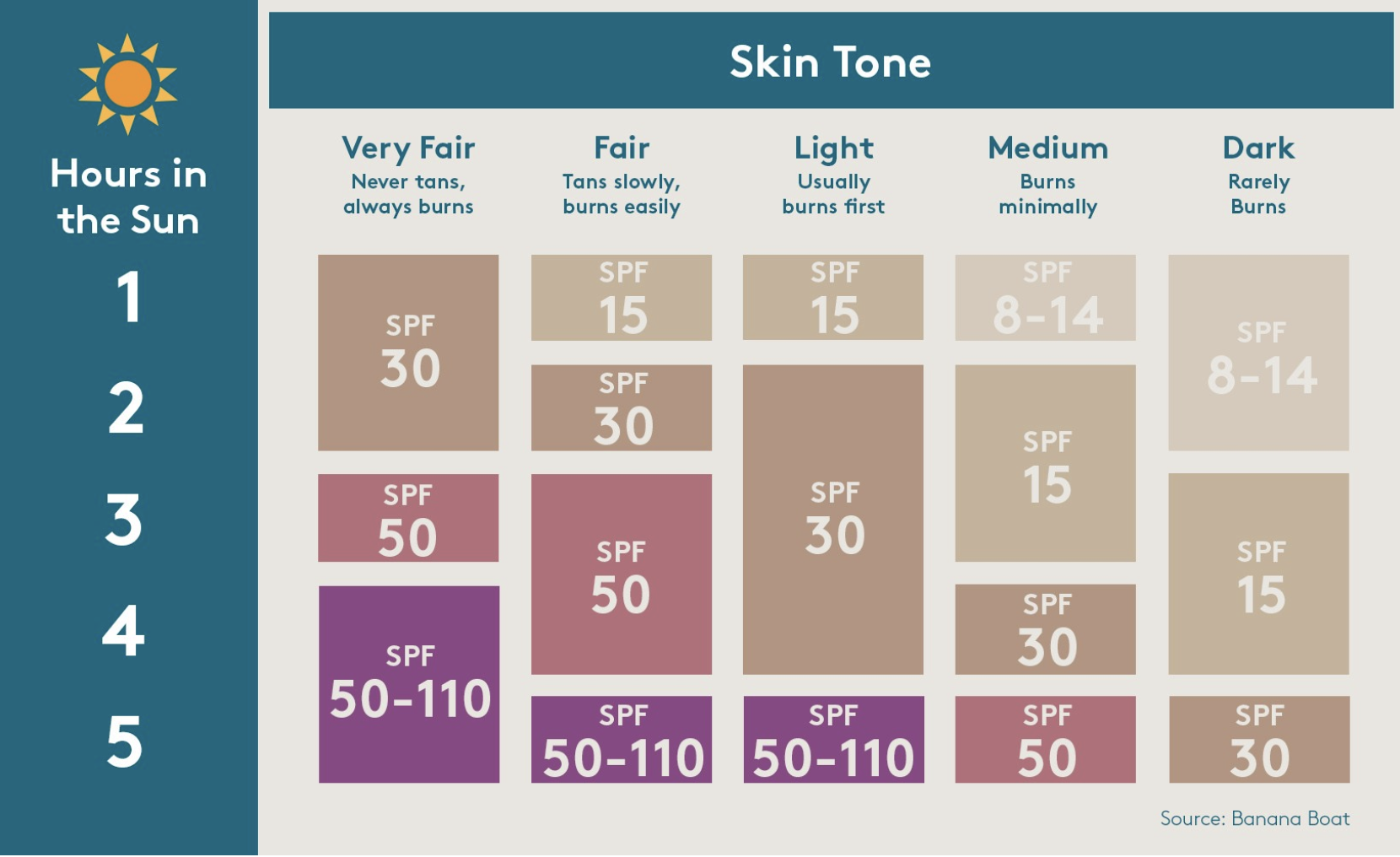
UV Rays
Protecting yourself from the sun is an essential aspect of self-care. July is National UV Safety Awareness Month, so let’s delve into the concept of “UV rays.” We’ve all heard the term “UV rays” thousands of times, but what exactly do UV rays entail? UV stands for ultraviolet, representing a type of electromagnetic radiation. Radiation is defined as the emission of energy that spreads out as it travels. UV radiation is emitted by the sun and manmade tanning beds. There is an entire spectrum of electromagnetic radiation which ranges from low-frequency radio waves to high-frequency gamma waves. Ultraviolet light resides on the higher frequency end, just above visible light and below X-rays.
How Much Sunlight Do We Need?
Ultraviolet rays play a crucial role in our lives as they stimulate the production of vitamin D in our bodies. Vitamin D, in turn, aids in absorbing calcium and phosphate, promoting strong bones. However, as the saying goes, “Too much of a good thing is a bad thing,” is especially true for UV rays. You only need a mere five to fifteen minutes of sun exposure two to three times a week to meet your vitamin D requirements. It’s important to note that UV rays are also classified as carcinogens. While they offer health benefits, prolonged exposure can lead to detrimental consequences. However, that doesn’t mean you can’t stay in the sun longer, it just means you need to take necessary safety precautions – especially in the hot month of July. It’s important to apply sunscreen more than once when you’re outside for long periods of time. Approximately 3.3 million Americans get a skin cancer diagnosis per year and More than 419 thousand of these diagnoses are linked to indoor tanning. These results should push us to value skin safety over tanning.
The beauty industry often promotes that tanning yields a “healthy glow,” yet the irony lies in the fact that this radiance stemming from UV exposure is, in fact, a consequence of skin damage. When your skin is exposed to UV rays, it produces melanin as a defense mechanism against further sun-related harm. Acknowledging this can shift our perspective on spray tans and appreciate the fake glow they provide. Opting for a spray tan is a wiser choice for your skin’s well-being than pursuing a real tan. It’s important to recognize that avoiding sunburn or tanning doesn’t necessarily help you avoid sun damage altogether. Prolonged exposure to UV rays can alter your DNA, potentially leading to concealed cancer risks.
Why Wear Sunscreen?
The primary method of shielding your skin from UV rays is through the use of sunscreen. Sunscreens can be categorized into two main types: physical and chemical. Physical sunscreens are dense and create a barrier against UV rays, preventing direct contact with the skin. On the other hand, chemical sunscreens are more lightweight and work by converting UV rays into harmless radiation. A wide array of both physical and chemical sunscreens are available at most drug stores. To explore the advantages and disadvantages of each type, click here It’s concerning how many individuals venture outside daily without applying sunscreen as a first step. Sunscreen proves effective not only during summer or sunny outdoor activities but also in cold conditions and even when indoors, as UV rays can penetrate clouds and windows. While the risk of skin damage is certainly higher under the midday sun on a July beach compared to a December morning at the office, it’s important to recognize that the sun’s impact is continuous. An astonishing 90% of the aging process can be attributed to sun exposure. If an elixir exits, promising eternal youth, it’s almost certain that sunscreen would be a key component. Incorporating sunscreen into your morning routine prior to leaving the house is essential. While applying sunscreen to your arms and legs might not be practical during fall and winter when they’re covered, neglecting to protect your face is never justified. For individuals with sensitive skin, opting for non-comedogenic sunscreen, preferably mineral-based, is advisable. This type should not clog pores or trigger acne breakouts. As sunscreen isn’t exactly tasty, remember to also purchase a lip balm with a sun protection factor (SPF). For most individuals, using sunscreen with an SPF of 30 or higher is recommended. The following chart illustrates the suitable SPF level for different needs.

Were you aware that sunscreen provides its full protective effect for only a duration of two hours? Consequently, it becomes essential to reapply it multiple times throughout the day. This might be particularly concerning for individuals who regularly wear makeup. The reassuring news is that there exist methods for reapplying sunscreen on top of makeup. You can find a demonstration of a few of these techniques by Michelle from Lab Muffin Beauty Science by clicking here.
Safeguarding Your Eyes
It’s crucial to acknowledge that UV damage isn’t limited to the skin alone; your eyes are also vulnerable. Given that the eyes consist of some of the most delicate tissues in the body, they are highly susceptible to the harmful effects of UV rays. Corneas can be easily penetrated by UV rays, leading to conditions like cataracts and other diseases. You may be thinking, “Well, I’m not going to put sunscreen on my eyeballs…” and we agree with you. Please don’t apply sunscreen to your eyes. The solution? Embrace the use of sunglasses—they serve a more critical purpose than just enhancing your appearance. However, not all sunglasses offer equal protection. A simple test can be performed using a UV light, if you have one, to determine the effectiveness of your shades: Shining a UV light on newer US paper currency will cause specific fibers to glow. Hold your sunglasses in front of the currency and shine the UV light onto the lenses. If the fibers on the bill continue to glow, it indicates that your sunglasses are insufficiently protective. Recognizing that most people don’t have UV lights at hand, an alternative option is to visit your local eye doctor. Many optometrists are willing to conduct a brief, free assessment to ascertain the level of protection your sunglasses provide. It’s worth noting that certain older sunglasses derive their UV protection from an outer lens coating. Should the lenses become scratched, it’s advisable to replace such sunglasses.
Reversing Sun Damage
So, what happens if the thought of reapplying sunscreen slips your mind, leading to a sunburn? Or even worse, if you’ve spent the past ten years basking in indoor tanning sessions? Could there still be hope for recovery? Let’s start with sunburns. Firstly, consider taking a refreshing bath or shower to alleviate some of the discomfort. Following this, apply moisturizer infused with aloe vera or soy. For pain and swelling reduction, you might opt for ibuprofen or aspirin. In the aftermath of a sunburn, proper hydration is crucial, so make an effort to consume more water than usual. During the healing process, it’s essential not to burst any blisters. Whenever you venture outside, even in warm weather, make sure to cover the sunburned area with clothing. The slight discomfort of perspiration is preferable to worsening the skin damage.
Now, onto the pivotal question: Can long-standing sun damage be reversed? Dermatologists stand by their top recommendation for addressing sun-damaged skin: vitamin A. This valuable nutrient is present in retinol creams*. Retinol is designed to penetrate your skin’s outer layer and reach the middle layer, where it stimulates collagen production and prevents pore blockages. Retinol also encourages skin exfoliation, enabling the shedding of dead and impaired skin cells at an accelerated rate. Gradually, this can lead to the reduction of fine lines and wrinkles. It’s noteworthy that retinol might initially cause skin flakiness and potentially trigger breakouts during the first 2-12 weeks of usage. However, the eventual long-term outcomes typically outweigh these temporary challenges. When incorporating retinol into your routine, consider spacing out applications by a day or two initially. Given that retinol heightens skin sensitivity to UV rays, it’s advisable to apply it at night and follow up with sunscreen promptly upon waking in the morning. And remember to consistently reapply your sunscreen!
In addition to retinol, lasers* can also help reverse sun damage. Laser treatments can often eliminate sun spots and address the small broken blood vessels that often arise from sun exposure. These lasers can even be deliberately employed to mildly damage the skin, triggering a healing response that encourages collagen production and the generation of healthy skin cells.
Naturally, the best course of action is always prevention rather than treatment. Wear your sunscreen!
Fun Fact: Some sunscreens are even eligible for Health Savings Accounts (HSAs)!
*It’s advisable to consult a dermatologist before choosing skin products or undergoing treatments, especially if you have sensitive skin. Individual reactions can vary widely.
What is your favorite brand of sunscreen? Comment below.
Sources
“Chemical vs Physical Sunscreen: The Facts”
La Roche Posay
“How Does Sunscreen Work to Protect Your Skin?”
Colorescience
“How Does Retinol Work on the Skin?”
Kristeen Cherney
“How Does Ultraviolet Light Damage Your Eyes?”
Nevada Eye Physicians
“How Long Does Sunscreen Last?”
Hilary Brueck
“How to Reapply Sunscreen Over Makeup”
Lab Muffin Beauty Science
“How to Test if Sunglasses are UV Protected?”
All About Vision
“How to Treat Sunburn”
American Academy of Dermatology
“Is It Possible to Reverse Sun Damage?”
Ali Venosa
“Should We Fear the Sun? What is a Suntan?”
Radiation Safety Institute
“Skin Cancer: Causes, Symptoms, and Treatments”
Cancer Treatment Centers of America
“Skin Cancer Facts and Statistics”
Skin Cancer Foundation
“The Electromagnetic Spectrum”
NASA
“This One Thing Slows Aging by 90%”
QSun Editorial Team
